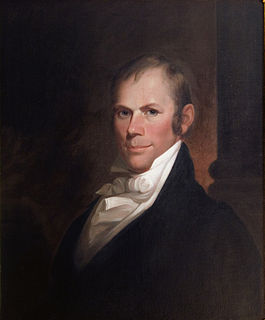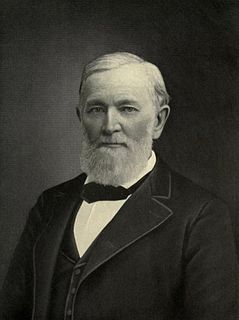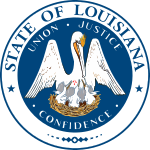
The Louisiana Purchase was the acquisition of the territory of Louisiana by the United States from Napoleonic France in 1803. In return for fifteen million dollars, or approximately eighteen dollars per square mile, the United States nominally acquired a total of 828,000 sq mi. However, France only controlled a small fraction of this area, most of it inhabited by Native Americans; for the majority of the area, what the United States bought was the "preemptive" right to obtain "Indian" lands by treaty or by conquest, to the exclusion of other colonial powers. The total cost of all subsequent treaties and financial settlements over the land has been estimated to be around 2.6 billion dollars.

Pointe Coupee Parish,, is a parish located in the U.S. state of Louisiana. As of the 2010 census, the population was 22,802. The parish seat is New Roads.

Franklin is a small city in, and the parish seat of, St. Mary Parish, Louisiana, United States. The population was 7,660 at the 2010 census. The city is located on Bayou Teche, southeast of the cities of Lafayette, and New Iberia and 22 miles (35 km)) northwest of Morgan City. It is part of the Morgan City Micropolitan Statistical Area and the larger Lafayette-Acadiana combined statistical area.

The 12th United States Congress was a meeting of the legislative branch of the United States federal government, consisting of the United States Senate and the United States House of Representatives. It met in Washington, D.C. from March 4, 1811, to March 4, 1813, during the third and fourth years of James Madison's presidency. The apportionment of seats in the House of Representatives was based on the Second Census of the United States in 1800. Both chambers had a Democratic-Republican majority.

The 14th United States Congress was a meeting of the legislative branch of the United States federal government, consisting of the United States Senate and the United States House of Representatives. It met in the Old Brick Capitol in Washington, D.C. from March 4, 1815, to March 4, 1817, during the seventh and eighth years of James Madison's presidency. The apportionment of seats in the House of Representatives was based on the Third Census of the United States in 1810. Both chambers had a Democratic-Republican majority.

The Indiana Territory was created by a congressional act that President John Adams signed into law on May 7, 1800, to form an organized incorporated territory of the United States that existed from July 4, 1800, to December 11, 1816, when the remaining southeastern portion of the territory was admitted to the Union as the state of Indiana. The territory originally contained approximately 259,824 square miles (672,940 km2) of land, but its size was decreased when it was subdivided to create the Michigan Territory (1805) and the Illinois Territory (1809). The Indiana Territory was the first new territory created from lands of the Northwest Territory, which had been organized under the terms of the Northwest Ordinance of 1787. The territorial capital was the settlement around the old French fort of Vincennes on the Wabash River, until transferred to Corydon near the Ohio River in 1813.

William Charles Cole Claiborne was an American politician, best known as the first non-colonial governor of Louisiana. He also has the distinction of possibly being the youngest member of the United States Congress in U.S. history, although reliable sources differ about his age.
From 1822 to 1849, Augusta College was located in Augusta, Kentucky in Bracken County. It was formed when the Bracken Academy and Methodist churches of Ohio and Kentucky joined. Augusta College was the third Methodist college founded in the United States. Its first president was Martin Ruter, D.D. It usually had enrollment of about 175–305 pupils.

Elections to the United States House of Representatives for the 15th Congress were held at various dates in different states between April 1816 and August 1817.

William Smith was an American politician from the state of South Carolina. He served two terms as a Senator in the United States Senate, the first from 1816 to 1823 and the second from 1826 to 1831. During his life Smith was one of the most prominent political leaders in the state of South Carolina. He formed an intense rivalry with John C. Calhoun, arguing against Calhoun's nationalist views, and advocating for states' rights.

Albert Estopinal Sr., was a sugar cane planter from St. Bernard Parish, Louisiana, who served as a Democrat in both houses of the Louisiana State Legislature between 1876 and 1900 and in the United States House of Representatives from Louisiana's 1st congressional district from 1908 until his death eleven years later at the age of seventy-four.

Alexander Barrow I was a lawyer and United States Senator from Louisiana. He was a member of the Whig Party. He was the half-brother of Washington Barrow, sharing the same father.
Carleton Hunt was a member of the U.S. House of Representatives representing the state of Louisiana. He served one term as a Democrat.

Edward James Gay was a financier and member of United States Congress. He was born at Liberty, Bedford County, Virginia, in the United States. Gay and his wife Lavinia Hynes were the grandparents of U.S. Senator Edward James Gay.

John Baptiste Charles Lucas was a French-born member of the U.S. House of Representatives from Pennsylvania. After meeting Benjamin Franklin, Lucas was so inspired—and so impatient with class injustices in France—that he sailed to America. Armed with a letter of introduction from Franklin, Lucas was made a federal land grant judge by Thomas Jefferson, then elected to the U.S. House of Representatives. He eventually resigned and moved to St. Louis, reportedly in part because he and his wife, Anne, missed French society.
The United States Senate elections of 1816 and 1817 were elections for the United States Senate that had the Democratic-Republican Party gain a net of two seats from the admission of a new state, and which coincided with the presidential election.

The 1816 United States elections elected the members of the 15th United States Congress. Mississippi and Illinois were admitted as states during the 15th Congress. The election took place during the First Party System. The Democratic-Republican Party controlled the Presidency and both houses of Congress, while the Federalist Party provided only limited opposition. The election marked the start of the Era of Good Feelings, as the Federalist Party became nearly irrelevant in national politics after the War of 1812 and the Hartford Convention.

Following is a table of United States presidential elections in Indiana, ordered by year. Since its admission to statehood in 1816, Indiana has participated in every U.S. presidential election.

The 1816 United States presidential election in Louisiana took place between November 1 to December 4, 1816, as part of the 1816 United States presidential election. The state legislature chose three representatives, or electors to the Electoral College, who voted for President and Vice President.
















